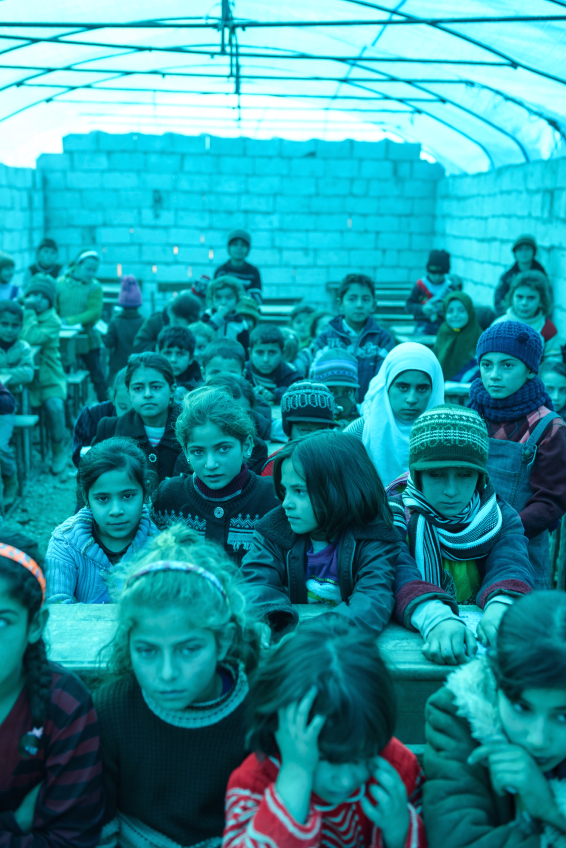Originally featured in Huffington Post here.
By Ambassador Melanne Verveer and Sarah Degnan Kambou
“I was in the field when they came. They came out of nowhere and they took me away, into the bush. I was just a child. They stole us away. They stole our innocence. They stole our lives from us.”
These are the words of Espérence, a girl taken from her family when war erupted in her village in the east of the Democratic Republic of Congo. And we know that there are tens of thousands more like her around the world. From villages in Northern Nigeria, to refugee camps in Jordan and Turkey, to communities fleeing their homes as a result of natural disasters, conflicts and crises are devastating the lives of men, women and children.
Conflict razes more than homes and cities. It dismantles social systems, leaving girls like Espérence particularly vulnerable to displacement and exploitation. In these settings, girls remain acutely vulnerable to physical and psychological abuse, rape, forced marriage, unwanted pregnancy and premature death. For adolescent girls living in these conditions, harassment and abuse are daily occurrences; basic safety is never taken for granted and fear is one of life’s few constants.
And yet, adolescent girls are powerful tools in building a better future. Ignoring or overlooking their rights and needs compromises any chance for long term sustainability and security. Joblessness, disrupted education, and untreated mental and physical wounds today are tomorrow’s peace and security problems. Moreover, we cannot possibly respond to these needs without talking with girls themselves.
We must shelve piece-meal approaches that neglect the expressed needs of adolescent girls and have subsequently proven to be woefully inadequate in mitigating their risk. Rather, the global community must move to a more effective approach – one that is girl-centric, comprehensive and integrated, and one that reduces risk and nurtures leaders for post-conflict societies.
Fundamentally, global leaders and policy makers must take a strong, principled stand against organizations, entities and individuals who are perpetrating violence, creating mayhem and devastating the lives of all citizens, but targeting adolescent girls in particular. Agencies entrusted with protecting civil society and the public good must condemn heinous, barbaric acts, such as forcing young girls to marry or act as sex slaves.
These global platforms are absolutely critical in focusing the world’s attention, and indeed resources, toward improving the lives of those living through conflict and crisis. But they are not enough. Above all, the global community must help societies marred by conflict and crisis to build up the community’s resilience to resist the further spread or a resurgence of a conflict.
What stands in the way of advancing a girl-centered strategy when responding to conflicts and crises? First, we lack critical information. Research documents how adolescent girls are faring globally, but these findings are reflective of more stable settings. Second, the media coverage of girls in crisis – from the Chibok Girls in Nigeria to girls in refugee camps in Jordan, to sex slaves held under ISIS – far too often sensationalizes coverage of girls’ horrific circumstances. Instead, the media must take a broader view of girls’ realities and report back on the rebuilding of lives and communities after the traditional media cycle for crises has ended.
Third, civil society groups, who are often frontline responders in crises, represent an under-tapped resource in building knowledge on how to address the needs of adolescent girls. Field staff trained to work in post-crisis settings can play an important role in facilitating critical reflection and documenting evidence that will inform policy and programs moving forward.
Fourth, those who have perpetrated violence against women and girls often emerge from conflict with impunity, or even as powerful leaders of new regimes. We must use law and policy tools at our disposal to ensure those who are responsible for perpetrating violence against girls are held to account. Moreover, we must pioneer new tools, which specifically advance the rights and lift up the voices of girls and women who have survived. We must work together to establish a new policy agenda for girls in crisis, which not only protects them from violence and exploitation in such instances, but also advance their rights.
In all spheres, let’s not move forward without the active involvement of girls themselves, who, through lived experience, are deeply familiar with difficult and dangerous times, and are knowledgeable about practical solutions that will meet immediate needs and prepare girls for the day when crisis abates and communities rebuild.
Each and every one of us has the power to say this is not the future we want for adolescent girls like Espérence. Let’s start today.
Ambassador Melanne Verveer is the Executive Director of the Georgetown Institute for Women, Peace and Security, and former Ambassador-at-Large for Global Women’s Issues.
Sarah Degnan Kambou is the President of the International Center for Research on Women.




